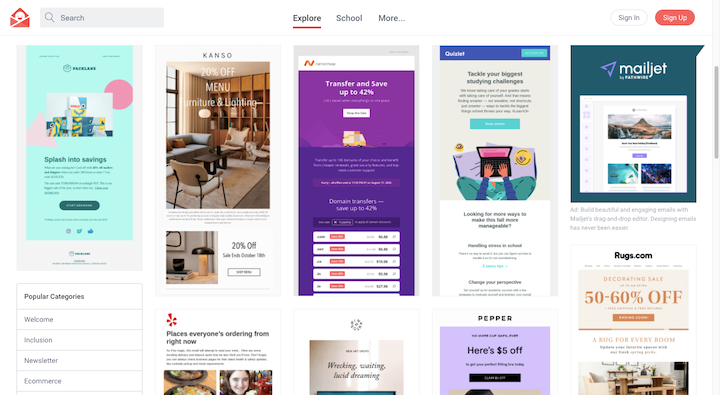Achieve Online Success With User-Friendly Web Site Layout
In the increasingly affordable electronic landscape, the design of a website can be a pivotal consider identifying a company's success. User-friendly design not just improves the overall user experience yet additionally influences key metrics such as retention, conversion, and involvement prices. By focusing on intuitive navigating and ease of access, organizations can promote a more comprehensive environment that charms to a more comprehensive audience. Nonetheless, comprehending the specific principles and attributes that add to reliable design needs a more detailed examination of present patterns and ideal methods, which could expose possibilities for substantial enhancement.
Relevance of Customer Experience
Customer experience (UX) plays a crucial duty in the success of an internet site, as it straight influences user complete satisfaction and engagement. A positive UX makes certain that site visitors can navigate the website easily, gain access to info quickly, and complete preferred actions, such as signing or making an acquisition up for an e-newsletter, without stress.
In an electronic landscape where competition is fierce, an internet site that prioritizes UX can significantly boost brand commitment and retention. Users are more probable to return to a site that uses a seamless experience, creating a cycle of repeat visits and raised client life time value. Reliable UX style can lower bounce rates, as users are much less likely to leave a site that satisfies their demands efficiently.
In addition, online search engine significantly consider individual experience variables when ranking sites. Aspects such as web page lots speed, mobile-friendliness, and intuitive navigating can influence a site's visibility in search outcomes. By focusing on UX, companies not just boost customer interactions but likewise improve their on-line visibility and integrity. Hence, buying user experience is vital for attaining lasting success in the electronic industry.
Key Principles of User-Friendly Layout
A successful straightforward layout rests on numerous crucial concepts that enhance use and ease of access. Is simpleness; a clutter-free interface enables customers to browse effortlessly, reducing cognitive lots. This principle highlights the value of clear and concise web content, allowing individuals to discover info quickly without unneeded distractions.
Uniformity is one more essential component. Regular use layouts, font styles, and shades promotes experience and constructs count on. Users need to feel comfy as they explore various sections of the website, recognizing that similar elements signify related performances.
Reliable typography likewise plays a critical duty in easy to use design. Clear typefaces, proper dimensions, and sufficient spacing ensure that web content is conveniently legible throughout numerous gadgets. Moreover, incorporating instinctive aesthetic power structures assists customers determine vital information and actions at a glimpse.

Crucial Features for Navigating
Efficient navigating is critical for any easy to use site, as it straight influences the general individual experience. A well-structured navigating system allows customers to locate info quickly and efficiently, lowering disappointment and boosting involvement.
One important feature is a clear and user-friendly menu that categorizes content practically - website design copyright. This menu needs to be conveniently obtainable from every web page, often positioned on top or on the side of the site. Furthermore, integrating breadcrumb navigation helps users understand their area within the website power structure and makes it less complicated to backtrack
Look performance is one more important element, allowing individuals to discover recommended you read specific content without sifting via numerous pages. This feature should be plainly shown and responsive to variants in input.
In addition, a mobile-responsive design ensures that navigating stays seamless throughout gadgets. As mobile usage remains to increase, food selections must adapt to various screen sizes without compromising functionality.
Last but not least, aesthetic cues such as highlighting the energetic page and using hover results can improve customer interaction. By integrating these crucial functions, website developers can develop a navigational experience that is not just straightforward but also motivates exploration and retention.
Accessibility Factors To Consider
Ease of access factors to consider are essential to developing a straightforward site that satisfies all individuals, despite their disabilities or capabilities (website design copyright). Websites need to be made to guarantee that customers with visual, auditory, cognitive, or electric motor impairments can engage with content properly. This begins with adherence to the Web Material Accessibility Guidelines (WCAG), which supply a structure for making digital material more available
Trick practices include using detailed different text for pictures, making sure shade comparison proportions meet ease of access requirements, and giving inscriptions for multimedia elements. Additionally, the navigation must be user-friendly, permitting customers to tab via web links and interactive elements conveniently. Implementing keyboard navigation is critical for those unable to make use of a mouse.
In addition, succinct and clear language enhances comprehension for individuals with cognitive restrictions. Types must be simple, with tags and directions that are understandable. Routine availability testing, including user comments from people with specials needs, can assist boost and determine barriers usability.
Measuring Layout Success

User feedback surveys and use screening are essential in analyzing the effectiveness of design elements. These methods permit designers to gather straight input from individuals, determining pain factors and areas for improvement. In addition, tracking heatmaps can expose where users click most regularly, aiding to notify layout changes and content prioritization.
Analytics tools play a vital role in gauging style success by providing data-driven understandings. For instance, Google Analytics can track customer habits, revealing patterns that show whether the style is helping with visit site or preventing the individual journey. Eventually, a successful web site layout not only fulfills business goals yet click for info also cultivates a pleasurable and smooth customer experience, driving engagement and commitment over time. Regularly reviewing these metrics makes certain that the site advances abreast with customer needs and market ideal techniques.
Final Thought
Focusing on customer experience via simplicity, intuitive navigating, and efficient feedback devices not only enhances customer interaction and complete satisfaction but additionally promotes brand name loyalty. Including essential navigating features and accessibility factors to consider further makes certain that all users can properly communicate with the website.
Web sites must be made to guarantee that customers with aesthetic, auditory, cognitive, or motor problems can engage with material efficiently.Gauging design success entails assessing just how effectively a web site fulfills its intended goals while giving a positive individual experience. Google Analytics can track customer behavior, revealing patterns that suggest whether the layout is impeding the customer or facilitating journey. Inevitably, a successful web site layout not only satisfies organization objectives yet also promotes a satisfying and smooth customer experience, driving interaction and loyalty over time. Focusing on customer experience via simplicity, instinctive navigating, and effective feedback mechanisms not only enhances user interaction and contentment but also fosters brand commitment.
Comments on “Website Design in copyright: Crafting Custom Websites for Every Business”